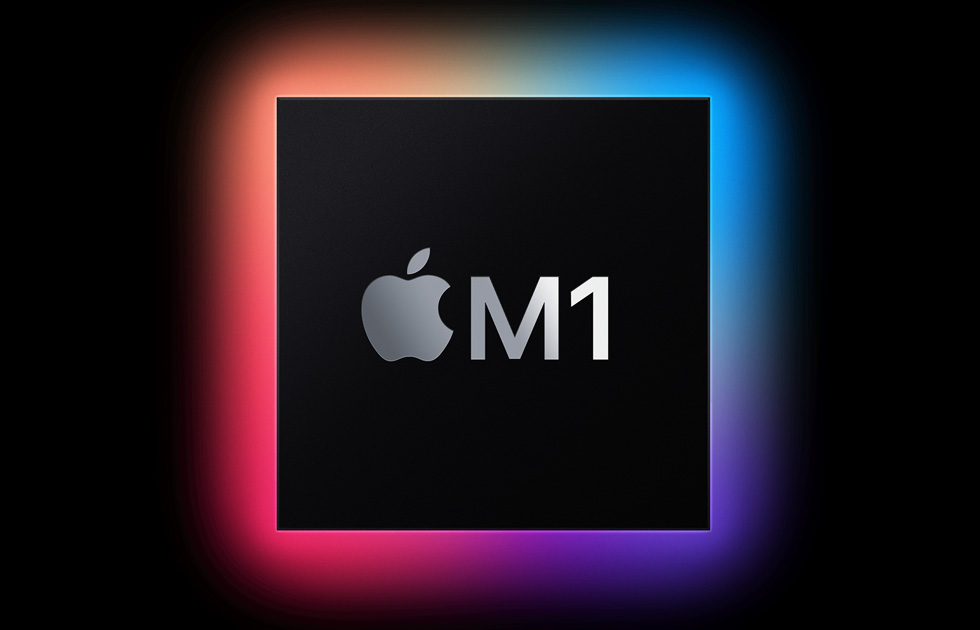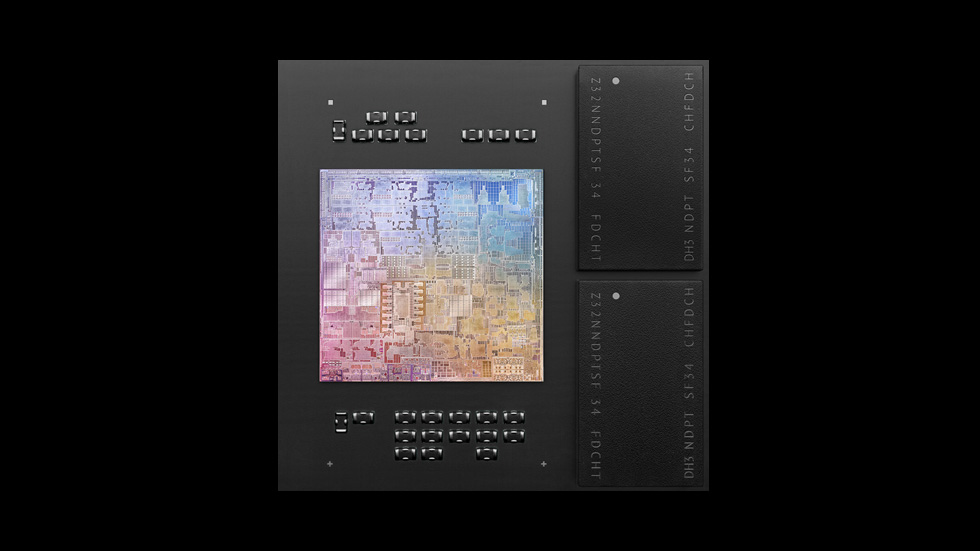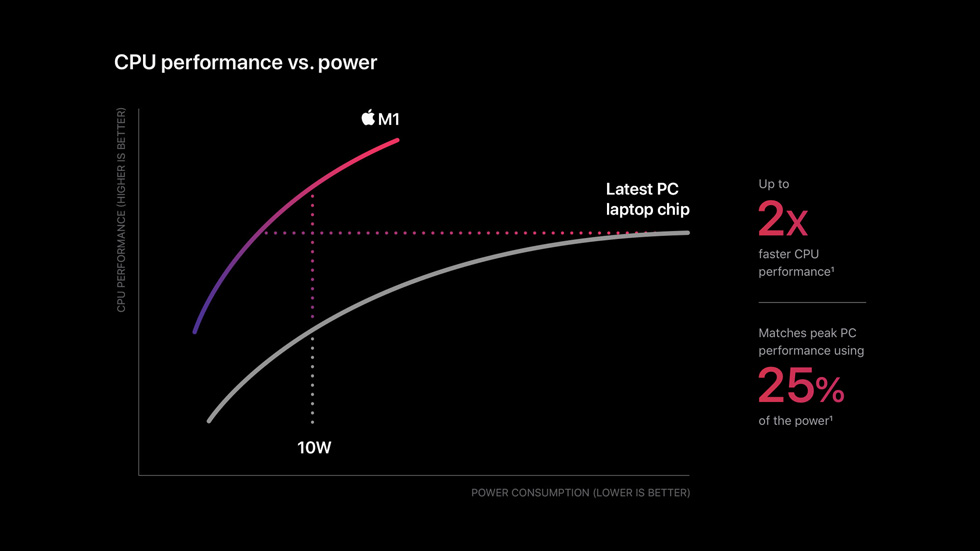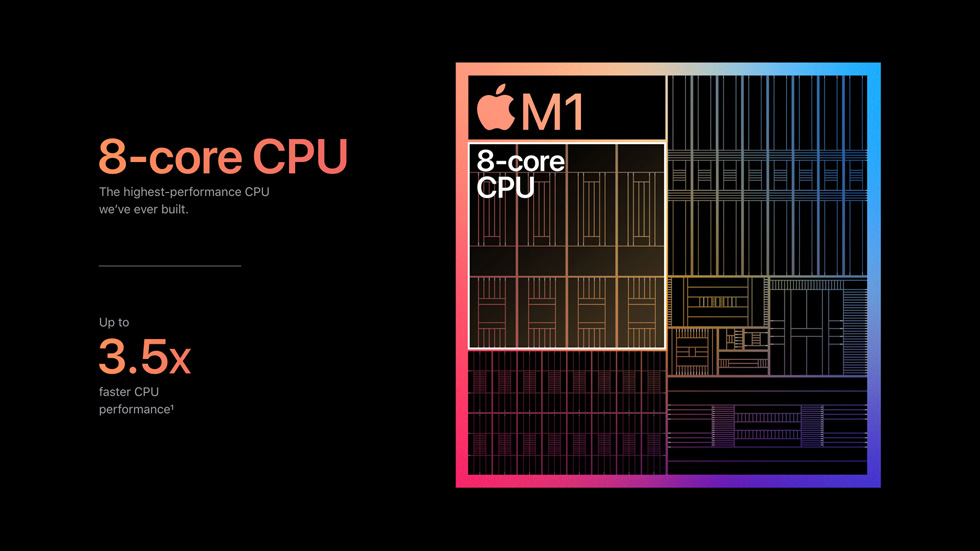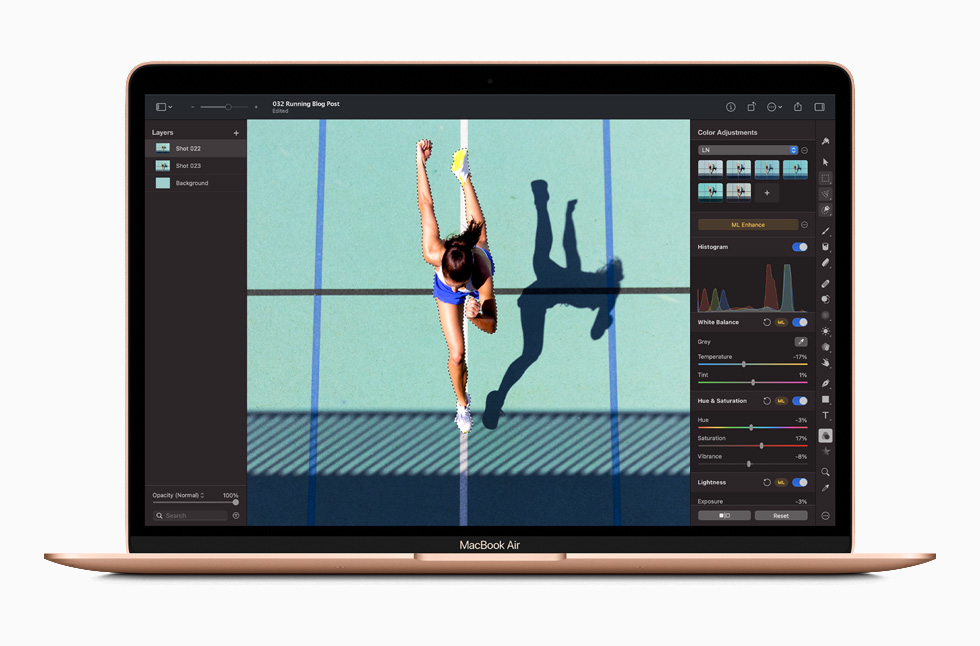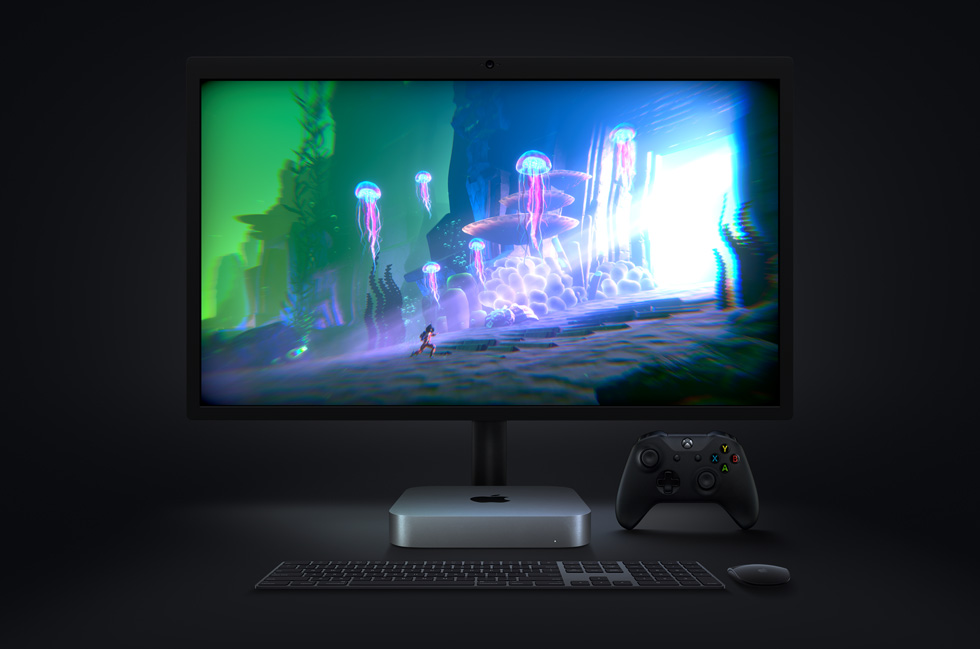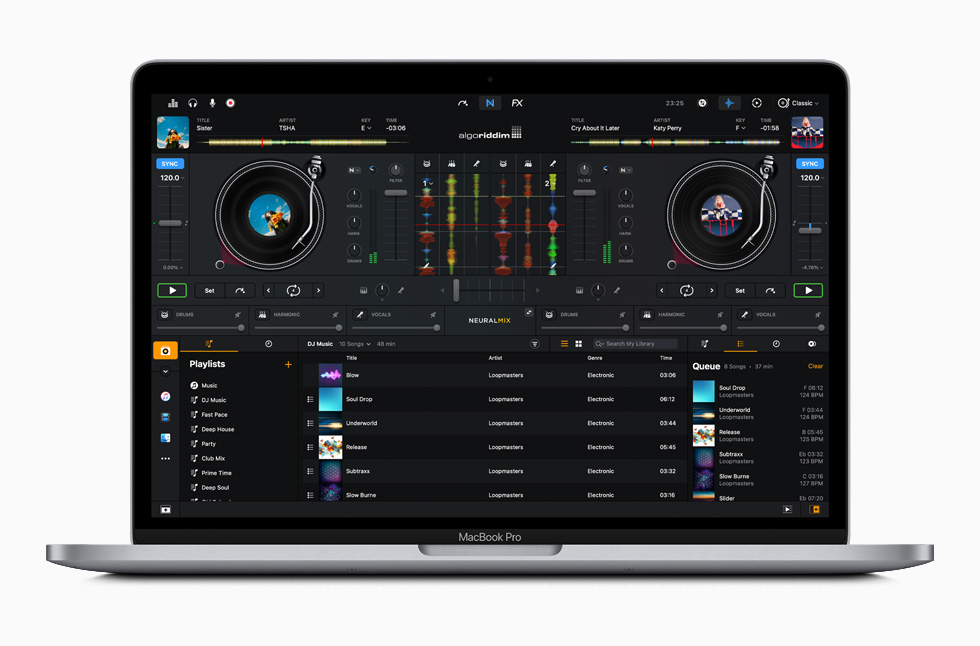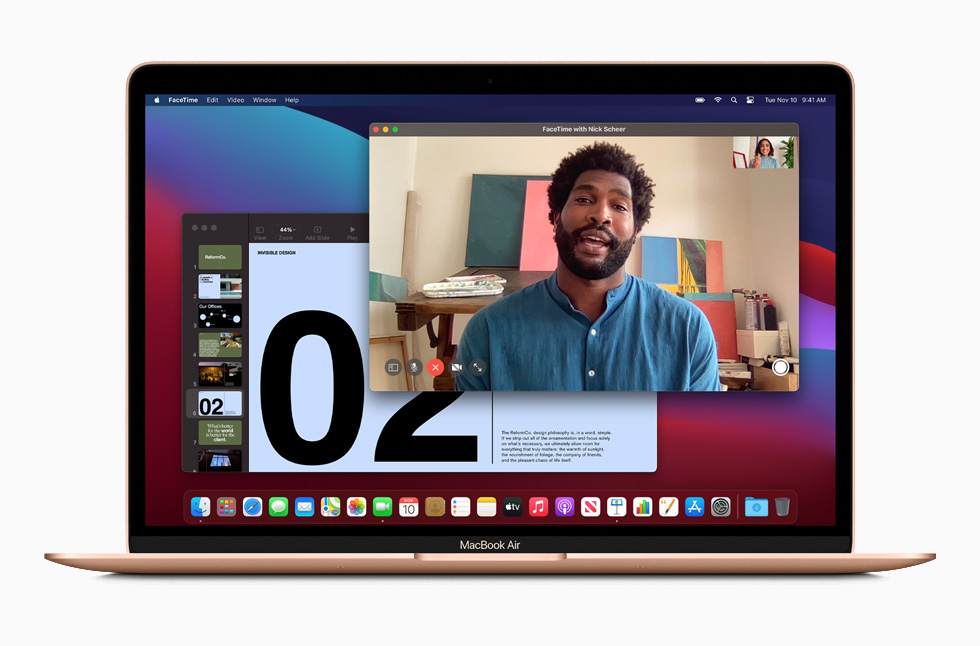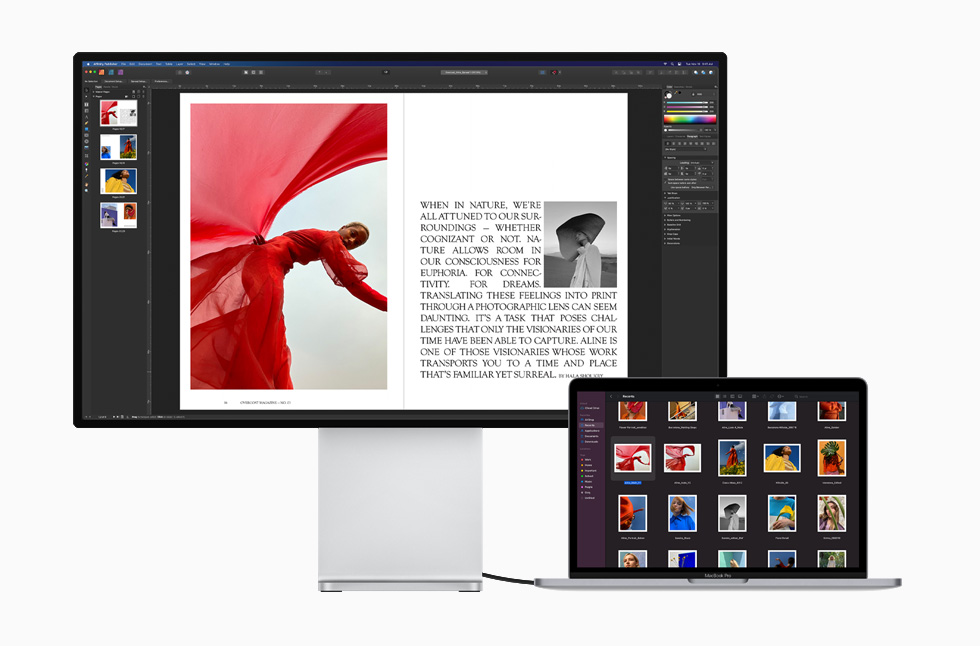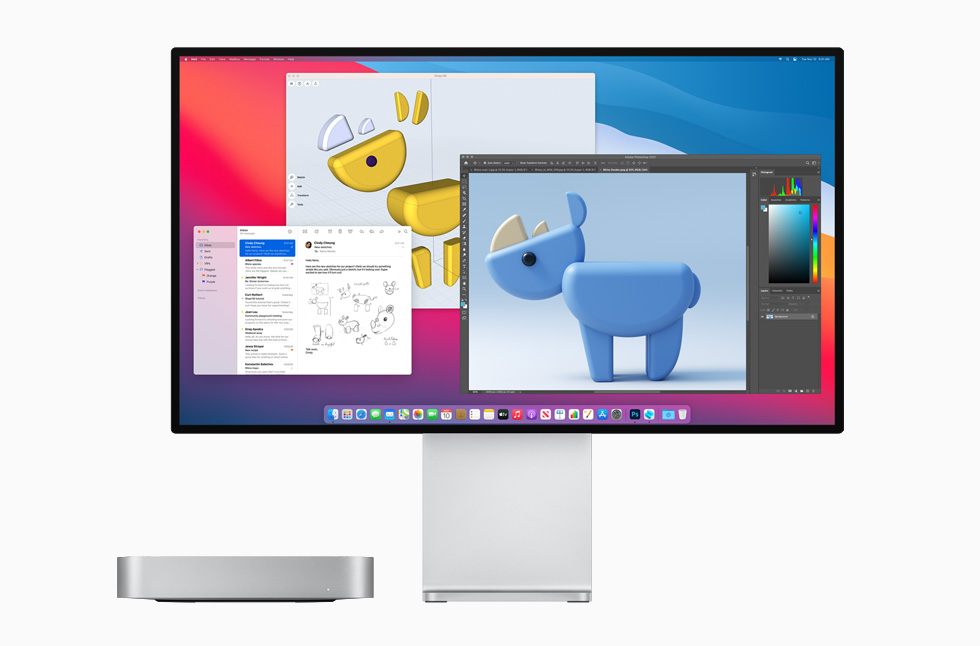PRESS RELEASE
November 10, 2020
Apple unleashes M1
With industry-leading performance, powerful features, and incredible efficiency, M1 is Apple’s first chip designed specifically for the Mac
Cupertino, California — Apple today announced M1, the most powerful chip it has ever created and the first chip designed specifically for the Mac. M1 is optimized for Mac systems in which small size and power efficiency are critically important. As a system on a chip (SoC), M1 combines numerous powerful technologies into a single chip, and features a unified memory architecture for dramatically improved performance and efficiency. M1 is the first personal computer chip built using cutting-edge 5-nanometer process technology and is packed with an astounding 16 billion transistors, the most Apple has ever put into a chip. It features the world’s fastest CPU core in low-power silicon, the world’s best CPU performance per watt, the world’s fastest integrated graphics in a personal computer, and breakthrough machine learning performance with the Apple Neural Engine. As a result, M1 delivers up to 3.5x faster CPU performance, up to 6x faster GPU performance, and up to 15x faster machine learning, all while enabling battery life up to 2x longer than previous-generation Macs. With its profound increase in performance and efficiency, M1 delivers the biggest leap ever for the Mac.1
“There has never been a chip like M1, our breakthrough SoC for the Mac. It builds on more than a decade of designing industry-leading chips for iPhone, iPad, and Apple Watch, and ushers in a whole new era for the Mac,” said Johny Srouji, Apple’s senior vice president of Hardware Technologies. “When it comes to low-power silicon, M1 has the world’s fastest CPU core, the world’s fastest integrated graphics in a personal computer, and the amazing machine learning performance of the Apple Neural Engine. With its unique combination of remarkable performance, powerful features, and incredible efficiency, M1 is by far the best chip we’ve ever created.”
First System on a Chip for the Mac
Macs and PCs have traditionally used multiple chips for the CPU, I/O, security, and more. Now with M1, these technologies are combined into a single SoC, delivering a whole new level of integration for greater performance and power efficiency. M1 also features a unified memory architecture that brings together high-bandwidth, low-latency memory into a single pool within a custom package. This allows all of the technologies in the SoC to access the same data without copying it between multiple pools of memory, further improving performance and efficiency.
The World’s Best CPU Performance per Watt
M1 features an 8-core CPU consisting of four high-performance cores and four high-efficiency cores. Each of the high-performance cores provides industry-leading performance for single-threaded tasks, while running as efficiently as possible. They are the world’s fastest CPU cores in low-power silicon, allowing photographers to edit high-resolution photos with lightning speed and developers to build apps nearly 3x faster than before. And all four can be used together for a huge boost in multithreaded performance.
The four high-efficiency cores deliver outstanding performance at a tenth of the power. By themselves, these four cores deliver similar performance as the current-generation, dual-core MacBook Air at much lower power. They are the most efficient way to run lightweight, everyday tasks like checking email or browsing the web, and preserve battery life like never before. And all eight cores can work together to provide incredible compute power for the most demanding tasks and deliver the world’s best CPU performance per watt.
The World’s Fastest Integrated Graphics
M1 includes Apple’s most advanced GPU. It benefits from years of analysis of Mac applications, including everyday apps and challenging pro workloads. With industry-leading performance and incredible efficiency, the GPU in M1 is in a class by itself. Featuring up to eight powerful cores capable of running nearly 25,000 threads simultaneously, the GPU can handle extremely demanding tasks with ease, from smooth playback of multiple 4K video streams to rendering complex 3D scenes. With 2.6 teraflops of throughput, M1 has the world’s fastest integrated graphics in a personal computer.
Blazing-Fast, On-Device Machine Learning
The M1 chip brings the Apple Neural Engine to the Mac, greatly accelerating machine learning (ML) tasks. Featuring Apple’s most advanced 16-core architecture capable of 11 trillion operations per second, the Neural Engine in M1 enables up to 15x faster machine learning performance. In fact, the entire M1 chip is designed to excel at machine learning, with ML accelerators in the CPU and a powerful GPU, so tasks like video analysis, voice recognition, and image processing will have a level of performance never seen before on the Mac.
More Innovative Technologies Packed into M1
The M1 chip is packed with a number of powerful custom technologies, including:
- Apple’s latest image signal processor (ISP) for higher quality video with better noise reduction, greater dynamic range, and improved auto white balance.
- The latest Secure Enclave for best-in-class security.
- A high-performance storage controller with AES encryption hardware for faster and more secure SSD performance.
- Low-power, highly efficient media encode and decode engines for great performance and extended battery life.
- An Apple-designed Thunderbolt controller with support for USB 4, transfer speeds up to 40Gbps, and compatibility with more peripherals than ever.
macOS Big Sur Optimized for M1
macOS Big Sur is engineered, down to its core, to take full advantage of all the capability and power of M1, delivering a massive boost in performance, astonishing battery life, and even stronger security protections. With M1, things users do every day feel noticeably faster and smoother. Just like iPhone and iPad, the Mac now instantly wakes from sleep. Browsing with Safari — which is already the world’s fastest browser — is now up to 1.5x speedier at running JavaScript and nearly 2x more responsive.2
With Big Sur and M1, Mac users can run a greater range of apps than ever before. All of Apple’s Mac software is now Universal and runs natively on M1 systems. Existing Mac apps that have not been updated to Universal will run seamlessly with Apple’s Rosetta 2 technology. And iPhone and iPad apps can now run directly on the Mac. Additionally, the foundations of Big Sur are optimized to unlock the power of M1, including developer technologies from Metal for graphics to Core ML for machine learning.
Start of a Two-Year Transition for the Mac
M1 powers the new MacBook Air, 13-inch MacBook Pro, and Mac mini. They join the rest of the Mac product line to form the strongest Mac lineup ever. This is the beginning of a transition to a new family of chips designed specifically for the Mac. The transition to Apple silicon will take about two years to complete, and these three systems are an amazing first step.
Share article
Images of Apple M1 Chip
- “World’s fastest CPU core in low-power silicon”: Testing conducted by Apple in October 2020 using preproduction 13-inch MacBook Pro systems with Apple M1 chip and 16GB of RAM measuring peak single thread performance of workloads taken from select industry standard benchmarks, commercial applications, and open source applications. Comparison made against the highest-performing CPUs for notebooks, commercially available at the time of testing. Performance tests are conducted using specific computer systems and reflect the approximate performance of MacBook Pro. “World’s best CPU performance per watt”: Testing conducted by Apple in October 2020 using preproduction 13-inch MacBook Pro systems with Apple M1 chip and 16GB of RAM. Performance per watt refers to the ratio of peak CPU performance to average power consumed using select industry standard benchmarks. Comparison made against high-performing CPUs for notebooks and desktops, commercially available at the time of testing. Performance tests are conducted using specific computer systems and reflect the approximate performance of MacBook Pro. “World’s fastest integrated graphics in a personal computer”: Testing conducted by Apple in October 2020 using preproduction 13-inch MacBook Pro systems with Apple M1 chip and 16GB of RAM using select industry standard benchmarks. Comparison made against the highest-performing integrated GPUs for notebooks and desktops, commercially available at the time of testing. Integrated GPU is defined as a GPU located on a monolithic silicon die along with a CPU and memory controller, behind a unified memory subsystem. Performance tests are conducted using specific computer systems and reflect the approximate performance of MacBook Pro.
- “World’s fastest browser”: Testing conducted by Apple in August and October 2020 using JetStream 2, MotionMark 1.1, and Speedometer 2.0 performance benchmarks on browsers that completed the test. Tested with prerelease Safari 14 and latest stable versions of Chrome, Firefox, and (Windows) Microsoft Edge at the time of testing, on Intel Core i5-based 13-inch MacBook Pro systems with prerelease macOS Big Sur and Windows 10 Home running in Boot Camp; 12.9-inch iPad Pro (4th generation) units with prerelease iPadOS 14 and Intel Core i7-based Microsoft Surface Pro 7 systems with Windows 10 Pro; and iPhone 11 Pro Max with prerelease iOS 14 and Samsung Galaxy S20 Ultra with Android 10. Devices tested with a WPA2 Wi-Fi network connection. Performance will vary based on usage, system configuration, network connection, and other factors. “Up to 1.5x speedier at running JavaScript and nearly 2x more responsive”: Testing conducted by Apple in September and October 2020 using JetStream 2 and Speedometer 2.0 performance benchmarks. Tested on preproduction MacBook Air and Mac mini systems with Apple M1 chip and 8-core GPU, as well as production 1.2GHz quad-core Intel Core i7-based 13-inch MacBook Air systems and 3.6GHz quad-core Intel Core i3-based Mac mini systems, all configured with 16GB RAM, 2TB SSD, and prerelease macOS Big Sur. Tested with prerelease Safari 14.0.1 and WPA2 Wi-Fi network connection. Performance will vary based on system configuration, network configuration, network connection, and other factors.
